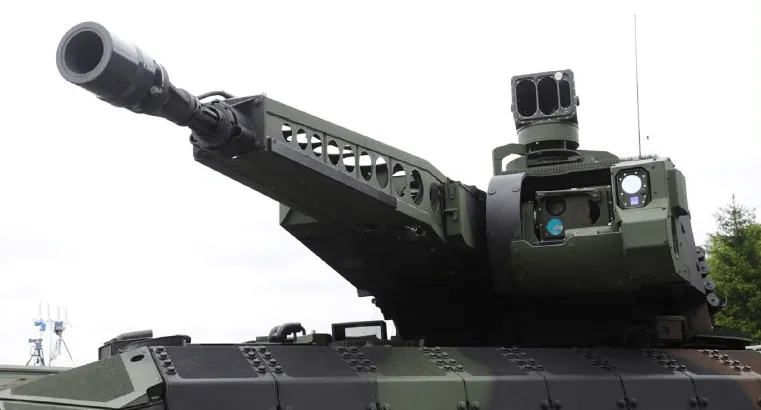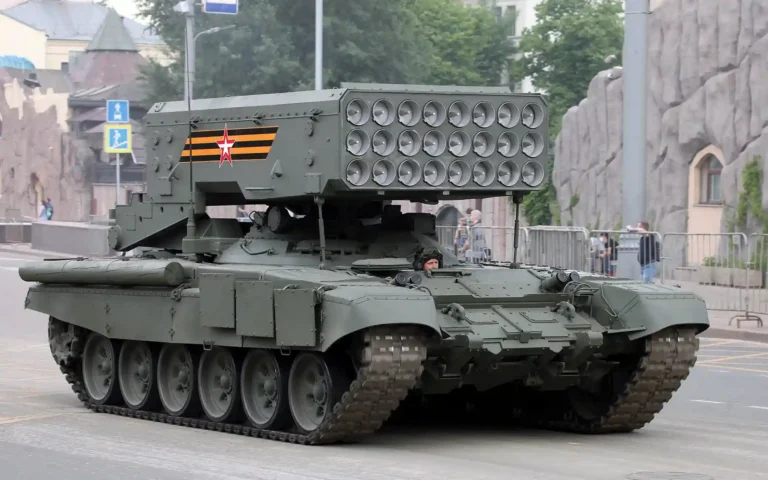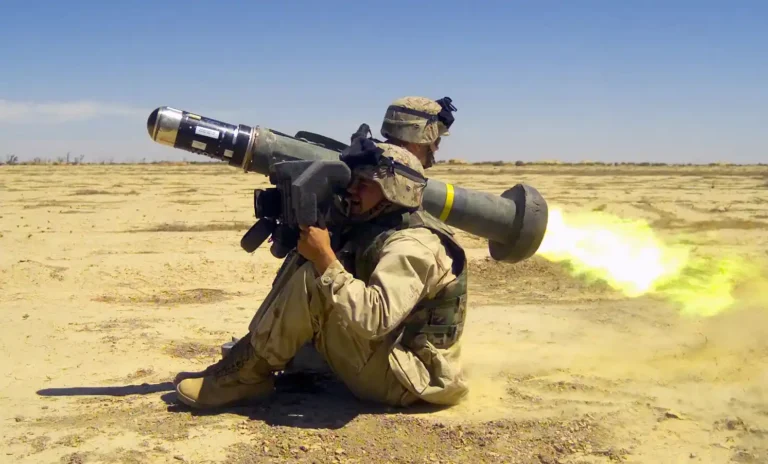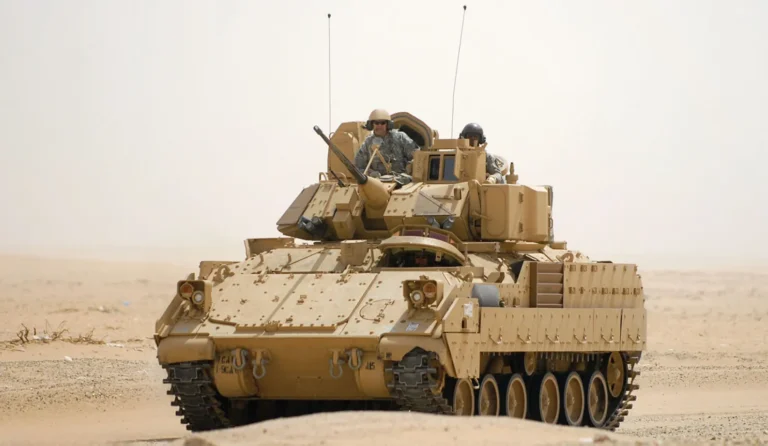Follow Us:
Share
Table of Contents:
PUMA IFV
Defense Feeds – Characterized by a combination of agility, firepower, and ultimate crew protection in the battlefield, meet one of the most protected tracked vehicles currently available, Puma Infantry Fighting Vehicle.
Welded with armor hull equipped with modular armor add-ons, Puma has three different levels of protection to meet operational needs.
So, how did the Puma become so powerful while also being highly protected? If you’re curious about the answer, don’t go anywhere and stay tuned.

The Puma Armored Infantry Fighting Vehicle (AIFV) is a tracked vehicle produced for the German Army by Projekt System & Management (PSM), a joint venture of Rheinmetall Landsysteme and Krauss-Maffei Wegmann (KMW), under a program authorized by the German Federal Parliament in 2002.
It has been in service with German Army since 2015. However, as of August 2021, 350 units of the vehicle had been delivered in total. Previously, the Puma program was known as the Igel and the Neuer Schuetzenpanzer (NsPz).
PUMA IFV: The most advanced infantry fighting vehicle in the world
The Puma was developed as a fully tracked transport vehicle that offers highly modern protection components and high firepower, making it one of the most advanced and most protected IFVs on the market. Puma was designed with three levels of protection to meet the operational needs.
The vehicle weight varies, including 29.4 tons, 31.45 tons, and 43 tons. There are other IFVs that are heavier and possibly more protected than the Puma such as the German Lynx KF-41 and the Russian Armata heavy IFV.
However, both of these IFVs are still in development and have received no production orders, whereas the Puma is a fully operational vehicle that has been built in large numbers.
With a length of 7.33 m, width of 3.43 m, and height of 3, Puma has a newly designed hull, not a modification of an older system. Its chassis’ development and design were undertaken by Rheinmetall.
An increase to the significantly more extensive Protection Level C (Combat) is carried out in the area of operation using easily attachable additional equipment and additional protection modules. These armored modules are attached to the vehicle’s flanks and hinged, ensuring rail-loading capability even with maximum Level C protection.
These protection modules are capable of protecting the crew against hand-held anti-tank weapons, 14.5 mm as well as 30 mm machine guns, and other threats. Besides that, mine protection of Puma is extremely effective against both blast and projectile mines.
It appears that the most protected variant of the Puma can withstand 120- and 125-mm projectiles over the front arc, while the mine blasts it is resistant to is equivalent to 10 kg of TNT.
It is also important to note that through the simple disassembly of the flank protection modules on the Puma, the weight of the military Airbus A400M is reduced to 31.45 tons.
On the other hand, the Puma IFV also has a sophisticated threat warning system for self-protection and survavibility. In August 2006, EADS Defence Electronics was awarded a contract for the Multifunctional Self-protection System or MUSS for the Puma vehicles.
The MUSS is made up of three major components: ultraviolet sensors, which include a laser warner and a missile warner that detects incoming projectiles, a computer, and electronic or pyrotechnic countermeasures. It can handle four threats at once and operates in 360° azimuth and 70° elevation.
Besides that, the Puma is outfitted with two optronic image displays, four rear-mounted cameras and one reversing camera, two vision blocks and one rotary-mounted/one image intensifier, and an open-hatch view (sliding hatch and partially opened rear ramp). A fire suppression system is also installed in the crew compartment, while a fire extinguishing system is installed in the engine compartment.
Additionally, the Puma AIFV has a combined nuclear, biological, and chemical (NBC) protection system, air conditioning, night vision, and main armament stabilization as standard.
This infantry fighting vehicle has a three-man crew consisting of commander, gunner, and driver along with up to eight equipped troops in the rear troop compartment. Passengers enter and exit the vehicle via a power-operated ramp in the back.
The Puma vehicle is powered by MTU’s new High Power Density 892 series diesel engine or also called a V10 MTU MT 892 Ka-501 turbocharged diesel engine. The MTU 892 series has an 800-kW rating, giving the Puma a power-to-weight ratio of 25.4 kW/t. It also generates 1,090 horsepower.
Therefore, this Puma engine is more powerful than the engines in some major battle tanks. For example, the original T-72 tank had a 720 hp engine, whereas the current Russian T-90A main battle tank has a 1000 hp engine. Thus, the Puma can reach a speed of 43.5 mph at an effective range of 404 miles.
Moreover, each side’s suspension consists of five dual rubber-tyred road wheels, with the drive sprocket and idler at the front. Armor plates protect the upper part of the suspension.
In terms of weaponry, the Puma is outfitted with a remotely controlled weapon station built by Kraus-Maffei Wegmann. It is mainly armed with one dual feed 30 mm MK 30-2 cannon.
This cannon is mounted on Austrian Ulan and Spanish Pizarro infantry fighting vehicles and has a fire rate of 700 rounds per minute at an effective range of 3 km. The round is non-toxic and does not have a depleted uranium penetrator. With a muzzle velocity of 1,385m/sec, the cannon fires 30 mm APFSDS-T (armor-piercing fin-stabilized discarding sabot-tracer) rounds.
The MK 30-2 cannon also fires the FAPIDS-T (frangible armor-piercing incendiary discarding sabot-tracer) round, which is used against both hard and soft targets. This vehicle is also armed with an ATGW launcher from Spike variants. This is due to the Eurospike is proposing the Spike-LR fire-and-forget anti-tank missile to the German Army as a guided missile system to arm the Puma.
Hence, PSM and the German Ministry of Defense signed a contract in December 2008 for the integration of the Spike missile system on Puma vehicles. Furthermore, for close-range combat, one 5.56 mm machine gun and eight 76 mm smoke grenade launchers come as secondary armament.
The German Army has already secured funding for a second batch of 229 Pumas. Furthermore, Puma heavy IFVs are planned to be upgraded to Puma A1 by 2023, with approximately 250 German IFVs out of 350. So, do you think the Puma infantry fighting vehicle is excellently protected as well as highly powerful?
Share
Defense Feeds
Defense Feeds is publication focusing on informing, engaging, and empowering the world by providing accurate information from defense technology.
Powered by Defense Feeds © 2025 – All rights reserved.




